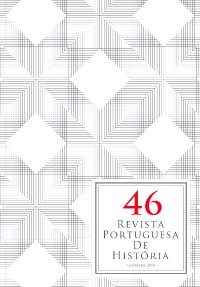Please use this identifier to cite or link to this item:
https://hdl.handle.net/10316.2/38186| Title: | “O pôr do Sol no Oriente: os emblemas fúnebres de D. Luís Carlos de Meneses (1689-1742) como instrumento de exaltação da presença portuguesa em Goa” | Other Titles: | “The sunset in the Orient: the use of the funeral emblems devoted to Luís Carlos de Meneses (1689-1742), in order to exalt the Portuguese presence in Goa” | Authors: | Araújo, Filipa Marisa Gonçalves Medeiros | Keywords: | Emblematics;Exequies;Goa;Jesuits;Propaganda;Emblemas;Exéquias;Goa;Jesuítas;Propaganda | Issue Date: | 2015 | Publisher: | Imprensa da Universidade de Coimbra | Abstract: | Tendo como referência o simbolismo de
Goa no contexto da presença portuguesa no
mundo, pretende-se mostrar de que modo os
mecanismos de exaltação contribuíram para
a manutenção do Império. O testemunho
deixado pelos Emblemas e poesias produzidos
pela casa professa do Bom Jesus por ocasião
das exéquias de D. Luís de Meneses revela,
pois, um exemplo da organização de aparatosas
celebrações em que a linguagem logoicónica
se colocou ao serviço da política
e da religião, reproduzindo os modelos
das cortes europeias do Barroco. Com o
objetivo de explicitar o contributo deste tipo
de composições para firmar a posição das
instituições administrativas e para fortalecer o
ascendente da Companhia de Jesus na capital
do Estado da Índia, elege-se como paradigma
de análise o aproveitamento da simbologia
solar, tendo em conta a recorrência desse
motivo na série emblemática sob escopo.
Promove-se, por fim, uma leitura intertextual dos compostos para conhecer melhor o seu
enquadramento simbólico no processo de
exaltação da presença lusitana em Goa. Taking into account the symbolism of Goa within the context of Portuguese presence around the World, this work attempts to demonstrate how the strategies of ideological exaltation promoted the maintenance of the Empire. The selection of Emblems and Poetries produced by the Jesuit Casa Professa do Bom Jesus in the occasion of the exequies of Luís de Meneses conveys therefore a good example of the spectacular organizations settled in the oriental capital. Reproducing the model of European Baroque courts, the social elites used the logo-iconic language to accomplish their own political and religious targets. In order to explain how the emblematic compositions contributed to strengthen the position of administrative institutions and confirm the importance of the Company in Goa, the analysis here proposed explores the symbolic value of the Sun in relation to the repetition of that motive along the emblematic series of 1742. Finally, this study suggests an intertextual reading of the emblems according to its symbolic framework within the propagandistic methods developed to exalt the Portuguese presence in Goa. |
URI: | https://hdl.handle.net/10316.2/38186 | ISSN: | 0870-4147 2183-3796 (digital) |
DOI: | 10.14195/0870-4147_46_7 | Rights: | open access |
| Appears in Collections: | Revista Portuguesa de História |
Files in This Item:
| File | Description | Size | Format | |
|---|---|---|---|---|
| o_por_do_sol_no_oriente.pdf | 2.32 MB | Adobe PDF |  |
Items in DSpace are protected by copyright, with all rights reserved, unless otherwise indicated.
